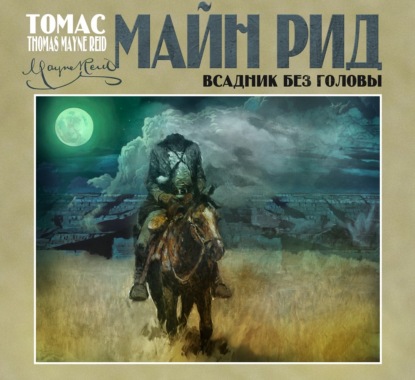 Полная версия
Полная версияПолная версия:
Томас Майн Рид Bruin: The Grand Bear Hunt
- + Увеличить шрифт
- - Уменьшить шрифт

Reid Mayne
Bruin: The Grand Bear Hunt
Chapter One.
The Palace Grodonoff
On the banks of the Neva, near the great city of Saint Petersburg, stands a splendid palace, known as the Palace Grodonoff. It is the property of a Russian nobleman of that name, as it is also his place of residence. Were you to drive up to the front gate of this grand palace, you would see a coat-of-arms sculptured in granite over the entrance. In this piece of sculpture, the principal and most striking figure is a bear, with the blade of a knife buried in his breast, the haft being clutched by a human hand! Open the gate, and enter the spacious courtyard. Inside, on the right and left, you will observe two live bears – both of chestnut-brown colour, and each of them as big as a buffalo. You cannot fail to notice them, for, ten chances to one, they will rush towards you with fierce growls; and were it not that a strong chain hinders them from reaching you, you might have reason to repent having entered the courtyard of the palace Grodonoff. Look around you in the courtyard and over the different doors that open upon it; you will again see the crest of the bear, sculptured in stone; you will see it over the stables, the coach-house, the granary, the kitchens, – everywhere. You may know by all this, that it is the coat-of-arms of the Baron Grodonoff, whose crest is a bear with a blade buried in its breast, and a human band clutching the haft.
You will naturally conclude that there is some history connected with this singular tableau – that it is the commemoration of some deed done by a Grodonoff, entitling him to use the bear as his heraldic device. This is quite true; and if you enter the picture-gallery of the palace, you will there behold the deed more explicitly represented, in a large oil-painting hung conspicuously in the centre of the wall. The scene of this painting is a forest of old trees, whose grey, gnarled trunks stand thickly over the ground. There is only a little open space or glade in the middle; and this is occupied by three figures, two men and a bear. The bear is between the two men; or, rather, one of the men is prostrate upon the ground – where he has been struck down by a blow from Bruin’s paw – while the huge animal stands over him reared up on his hind quarters. The other man is upon his feet, apparently engaged in a desperate wrestle with the fierce brute, and likely to prove the conqueror – as he has already buried the blade of a large hunting-knife in the animal’s breast, and directly over the region of its heart. Indeed, the shaggy monster already shows signs of succumbing. His paw has dropped from the shoulder of his antagonist, his long tongue lolls out, the blood rushes from his mouth and nostrils, and it is evident that his strength is fast forsaking him, and that he will soon sink lifeless upon the earth. You will notice that the two men who figure in the painting are very dissimilar in appearance. Both are young men, and both are in hunting costume; but so unlike in their dress, that you could not fancy they followed the same occupation. He upon the ground is richly attired. He wears a tunic of finest green cloth slashed with sable fur on the skirt, collar, and sleeves; his limbs are encased in breeches of white doeskin; and his boots, reaching nearly to his thighs, are of soft russet leather, ample at the tops. A belt around his waist is richly embroidered; and the hilt of a short hunting-sword, protruding from the sheath, appears chased and studded with jewels. A light plumed hat lies upon the ground near his head – evidently tossed off in the struggle – and beside it is a boar-spear that has been jerked out of his fingers as he fell. The whole costume is similar to that used upon the stage – when some young German or Sclavonian prince is represented as hunting the wild boar in the forests of Lithuania.
In reality it is a prince who is depicted in the group of the gallery Grodonoff – but not a German prince. He is a Russian, and the bear is the Russian bear.
The other hunter – he who had given its death-blow to the fierce quadruped – is dressed in a style entirely different. It is the costume of a fur-hunter – a trapper of sables – and consists of skin coat and cap, with a strong leathern belt round his waist, and rough boots of untanned hide upon his legs and feet. The costume is rude, and bespeaks him a peasant; but his face, as the painter has represented it, is neither common nor ill-looking. It is not so handsome as that of the prince: for he would be an unskilful artist – one utterly reckless of his own fortune – who should paint the features of a peasant as handsome as those of a prince. In Russia, as elsewhere, such an imprudent painter would be a rara avis indeed.
The picture of which we are speaking is the pièce de résistance of the Grodonoff gallery. Its size and conspicuous position declare the fact; and the story attached to it will show that it merits the distinction. But for that picture, or rather the scene which it represents, there would be no Grodonoff gallery – no palace – no baron of the name. Paintings, palace, title, all have their origin in the incident there represented – the battle with the bear.
The story is simple and may be briefly told. As, already stated, he upon his back, hat off, and spear detached from his grasp, is a Russian prince – or rather was one, for at the time when our history commences he is an emperor. He had been hunting the wild boar; and, as often happens to sporting princes, had become separated from his courtier attendants. The enthusiasm of the chase had led him on, into the fastnesses of the forest, where he came suddenly face to face with a bear. Princes have their hunter ambition as well as other men; and, in hopes of tailing a trophy, this one attacked the bear with his boar-spear. But the thrust that might have penetrated the flesh of a wild boar, had no effect upon the tough thick hide of Bruin. It only irritated him; and as the brown bear will often do, he sprang savagely upon his assailant, and with his huge paw gave the prince such a “pat” upon the shoulder, as not only sent the spear shivering from his grasp, but stretched his royal highness at full length upon the grass.
Following up his advantage, the bear had bounded forward upon the prostrate body; and, no doubt, in the twinkling of a bedpost would have made a corpse of it – either squeezing the breath out of it by one of his formidable “hugs,” or tearing it to pieces with his trenchant teeth. In another moment the hope of Russia would have been extinguished; but, just at this crisis, a third figure appeared upon the scene – in the person of a young hunter – a real one – who had already been in pursuit of the bear, and had tracked him up to the spot.
On coming upon the ground, the hunter fired his gun; but, seeing that the shot was insufficient, he drew his knife and rushed upon the bear. A desperate struggle ensued, in which, as may be already anticipated, the young hunter proved victorious – having succeeded in sheathing his blade in the heart of the bear, and causing the savage quadruped to “bite the dust.”
Neither the prince nor the peasant came scathless out of the encounter. Both were well scratched; but neither had received any wound of a serious nature; and the amateur hunter rose once more to his feet, conscious of having made a very narrow escape.
I need not add that the prince was profuse in his expressions of gratitude to him who had saved his life. The young hunter was not one of his own party, but a stranger to him, whose home was in the forest where the incident occurred. But their acquaintance did not end with the adventure. The prince became an emperor – the peasant hunter a lieutenant in the Imperial Guard, afterwards a captain, a colonel, a general, and finally a baron of the empire!
His name?
Grodonoff, – he in whose palace hangs the picture we have described.
Chapter Two.
The Baron Grodonoff
In one of the apartments of the palace Grodonoff, behold its proprietor, the baron himself! He is seated in an old oak chair, with a heavy table of the same material in front of him. On the table is spread out a map of the world; and by the side of the chair stands a large terrestrial globe. Several shelves standing against the wails contain books; and yet the apartment is not a library in the proper sense of the word: rather is it a large oblong saloon; having three of its sides occupied by spacious glass cases, in which are exhibited objects of natural history, – birds, quadrupeds, reptiles, and insects, – all mounted in proper form and arranged in due order. It is, in fact, a museum, – a private collection – made by the baron himself; and the books that fill the shelves are works relating to natural history alone.
In a man of military aspect – an old veteran with snow-white hair, and grand moustaches of like hue – such as he who is seated at the table – you would scarce expect to meet the lover of a study so pacific in its character as that of natural history? Rather would you look to find him pouring over plans of fortifications, with the pages of Yauban spread open before him; or some history detailing the campaigns of Suwarrow, Diebitsch, Paskiewitch or Potemkin? In this instance, however, appearances were deceptive. Though the baron had proved an excellent military officer, and seen service, he was a student of Nature. His early years, spent as a hunter, had begot within him a taste for natural history; which, as soon as the opportunity offered, had become developed by study and research. It was now no longer a predilection, but a passion; and in his retirement nearly the whole of his time was devoted to his favourite study. A vast fortune, which his grateful sovereign had bestowed upon him, enabled him to command the means for gratifying his taste; and the magnificent collection by which he was surrounded gave evidence that no expense was spared in its gratification.
It was a map and globe of the world that now occupied his attention. Could these have reference to a question of natural history?
In an indirect manner they had, – and what follows will account for their presence.
A hand-bell stood upon the table. The baron rang it; and before its tingling had ceased, the door opened, and a servant entered the apartment.
“Summon my sons to attend me!”
The servant bowed, and retired.
A few minutes after, two youths entered the apartment. They appeared to be of the respective ages of sixteen and eighteen. One, the elder and taller, was of a darkish complexion, with brown waving hair, and hazel eyes. The expression of his countenance was that of a youth of firm and rather serious character; while the style of his dress, or rather his manner of wearing it, showed that he was altogether without vanity in matters of personal appearance. He was handsome withal, having that aristocratic air common to the nobility of Russia. This was Alexis.
The younger brother differed from him as much as if no kinship existed between them. He was more the son of his mother, the baroness; while Alexis inherited the features and a good deal of the disposition of his father. Ivan was a fair-haired lad, with golden locks curling over a forehead of bright blonde complexion, and cheeks that exhibited the hue of the rose. His eyes were of a deep azure-blue – such as is often seen among the Sclavonic races – and their quick sparkle told that in the breast of Ivan there beat a heart brimming with bright thoughts, and ever ready for mischief and merriment, but without any admixture of malice.
Both approached their father with a serious expression of countenance. That of Alexis bespoke sincerity; while Ivan stole forward with the air of one who had been recently engaged in some sly mischief, and who was assuming a demure deportment with the design of concealing it.
A word about these two youths, and the object for which their father had summoned them into his presence. They had now been each of them more than ten years engaged in the study of books, under some of the ablest teachers that Russia could furnish. Their father himself had given much time to their instruction; and, of course, an inclination to their minds similar to that which characterised his own, but chiefly to the mind of Alexis.
The latter had imbibed a fondness for the study of nature, while Ivan was more given to admire the records of stirring events, with a strong penchant for the splendours of the world, in which he felt longing to bear a part. The nature of the books which had passed through their hands – a great number of them being books of travel – had begotten within these youths a wish to see the world, which, increasing each day, had grown into an eager desire. This desire had been often expressed in hints to their father; but at length, in a more formal manner, by means of a written petition, which the boys, after much deliberation, had drawn up and presented to him, and which was now seen lying open before him upon the table.
The petition was simply their united request, that their father would be so good as to allow them to travel and see foreign countries – where, and how, to be left to his wise guidance and discretion.
It was to receive an answer to this petition, that his sons were now summoned into his presence.
Chapter Three.
The Sealed Orders
“So, my youngsters!” said the baron, directing his glance upon them, “you have a desire to to travel? You wish to see the world, do you?”
“True, papa!” modestly answered Alexis; “our tutor tells us that we are sufficiently educated to go abroad; and, if you have no objection, we should very much like to make a tour.”
“What! before going to the University!”
“Why, papa! I thought you were not going to send us to the University for some time to come? Did you not say, that a year of travelling was worth ten at a University?”
“Perhaps I may have said so; but that depends upon how one travels. If you travel merely to amuse yourselves, you may go over all the world, and come back no wiser than when you started! I have known many a man return from a circumnavigation of the globe, without bringing with him the knowledge of a single fact that he might not have obtained at home. You would expect to travel in snug railway-carriages, and comfortable steam-ships, and sleep in splendid hotels – is that your expectation?”
“Oh no, papa! whatever way you may direct, that will be agreeable to me,” said Alexis.
“As for me,” rejoined Ivan, “I’m not particular. I can rough it, I’m sure.”
There was a little flavour of bravado in the manner of Ivan’s speech, that showed he was scarce inclined to the roughing system, and that he merely assumed the swaggering air, because he had no belief that he would be called upon to make trial of it.
“If I permit you to travel,” continued the baron, “where would you like to go? You, Alexis! to what part of the world would your inclination lead you?”
“I should like to see the new world of America – its noble rivers, and forests, and mountains. I should certainly visit America, if it were left to my choice; but I shall be guided by you, papa, and do as you direct.”
“You, Ivan?”
“Paris, for me, of all places in the world!” replied Ivan, without any suspicion that the answer would be displeasing to the father.
“I might have known so,” muttered the baron, with a slight frown clouding his forehead.
“O papa!” added Ivan, noticing the shade of displeasure which his answer had produced; “I don’t care particularly about Paris. I’ll go anywhere – to America, if Alexis likes it best —all round the world for that matter.”
“Ha! ha! ha!” laughed the baron; “that sounds better, Ivan; and, since you offer no objection to it, all round the world you shall go.”
“Indeed? I’m glad to hear it,” said Alexis.
“What! visit all the great cities of the world?” exclaimed Ivan, whose mind was evidently occupied with the delights of great cities.
“So” replied his father; “it is just that which I do not intend you shall do. There is a great deal to be learnt in cities, but much that would be better not learnt at all. I have no objection to your passing through cities – for you must needs do so on your journey – but one of the conditions which I shall prescribe is, that you make stay in no city, longer than you can arrange for getting out of it. It is through countries I wish you to travel – amidst the scenes of nature – and not in towns and cities, where you would see very little more than you can in Saint Petersburg itself. It is Nature I wish you to become acquainted with, and you must see it in its most primitive forms. There only can you appreciate Nature in all its sublimity and grandeur.”
“Agreed, papa!” exclaimed both the boys at once. “Which way do you wish us to go?”
“All round the world, as Ivan has suggested.”
“Oh, what a long voyage! I suppose we shall cross the Atlantic, and then by the isthmus of Panama to the Pacific; or shall we go as Magellan went, around Cape Horn?”
“Neither way – I wish you to make great journeys by land, rather than voyages by sea. The former will be more instructive, though they may cost more time and toil. Remember, my sons! I do not send you forth to risk your lives without a purpose. I have more than one purpose. First, I wish you to complete your studies of natural science, of which I have taught you the elements. The best school for this is the field of Nature herself, which you shall explore in your travels. Secondly, as you both know, I am fond of all natural objects, but especially those that have life – the beasts of the field and the birds of the air; these you must observe in their native haunts, with their habits and modes of existence. You will keep a journal of all facts and events that may be worth noting down, and write out in detail such adventures as may occur to you upon your route, and you think may prove interesting to me to read on your return. I shall provide you with ample means to accomplish your journey; but no money is to be wasted by idly sojourning in large cities: it must be used only for the necessary expenses of your travels. The emperor has been kind enough to give you a circular letter, which will get you funds and such other assistance as you may require from his agents in all parts of the world.”
“We promise, dear father, strictly to adhere to your instructions. But whither do you desire us to go?” Alexis asked the question.
The baron paused for some time before making reply. Then, drawing from his desk a sealed paper, which showed signs of having been but recently folded, he gravely said as he held it towards them —
“In this document you will find the conditions upon which I give you permission to travel. I do not ask you to agree to them, until you have carefully examined and reflected upon them. You will therefore retire to your room, read this document over, and, having given its contents due consideration, return, and signify whether you accept the terms; for if not, there is to be no travelling.”
“By the Great Peter!” whispered Ivan to Alexis, “they will be hard indeed if we don’t accept them.”
Alexis took the paper, and both, bowing to their father, retired to their own apartment.
The seal was immediately broken and not without some surprise did they peruse the contents of the document. It was in the form of an epistle, and ran thus: —
“My sons Alexis and Ivan! – You have expressed a desire to travel, and have requested me to give you my permission. I accede to your request, but only upon the following conditions: You must procure for me a skin of every variety of bear known upon the earth. I do not mean such varieties as are termed ‘accidental,’ arising from albinism or like circumstances, but every species or variety known to naturalists and acknowledged as ‘permanent.’ The bears from which these skins are to be taken must be killed in their native haunts, and by your own hands – with no other assistance than that of an attendant whom I shall appoint to accompany you. In order to accomplish the task which I have imposed upon you, it will be necessary for you to go ‘round the world;’ but I add the further condition, that you are to go only once round it. In latitude, I leave you free to range – from pole to pole, if it so please you (this was a stretch of liberty at which both boys laughed); but longitudinally, no. You must not cross the same meridian twice before returning to Saint Petersburg. I do not intend this condition to apply to such traverses as you may be compelled to make, while actually engaged in the chase of a bear, or in tracking the animal to his den: only when you are en route upon your journey. You will take your departure from Saint Petersburg, and go east or west, which you please. From the conditions I have imposed upon you, I hope you will have skill enough to discover that a route is traced out for you, and, that, on starting, you can follow it either eastward or westward. This, with all matters relating to your means and mode of travelling, I leave to your own choice; and I trust that the practical education you have received will enable you to make your tour with proper judgment. (‘Tour, indeed!’ exclaimed Ivan.) Once out of my palace, I take no farther charge of you. You may be some years older before I see you again; but I trust the time will not be mis-spent; and that upon your return you may be able to give a proper account of yourselves, is the earnest hope and wish of your affectionate father, Michael Grodonoff.”
Chapter Four.
Discussing the Conditions
The two youths were no little astonished by the contents of this singular epistle; but, for all that, the terms imposed did not seem to them either harsh or unreasonable, and they were only too pleased to accede to them. They partly guessed their father’s motive. They knew that he loved both of them with a true paternal love; but his affection was not of that kind to pet and pamper them within the precincts of his luxurious palace. He had a different idea of what would be beneficial to their future interests. He believed in the education which is acquired in the rude school of toil and travel, more than in the book-lore of classic universities; and he was determined that they should have a full measure of this sort of training. He had resolved that they should see the world; not according to the ordinary understanding of this hackneyed phrase – not the world of towns and great cities, with their empty shows and vices – but the world of Nature; and, in order that they should have the opportunity of becoming thoroughly acquainted with this sort of world, he had traced out for them a route that would lead them into its very wildest scenes, and disclose to them its rarest and most primitive forms.
“By my word, brother!” exclaimed Ivan as soon as Alexis had finished reading the letter, “we shall have travelling to our hearts’ content. Certainly, papa has adopted a strange plan to keep us out of the walls of great cities.”
“Yes,” quietly answered Alexis; “there are not many cities where bears abound.”
“Such strange conditions!” added Ivan, “I wonder what father can mean by imposing them upon us.”
“Indeed, I hardly know myself. One thing only seems to explain it.”
“What is that, brother?”
“You are aware, Ivan, of the interest that papa takes in all matters relating to bears. As people say, it is almost a mania with him.”
“Oh! the great picture in the gallery will account for that,” said Ivan, laughing. “But for a bear, you know, our papa would never have been a baron.”
“True: that may have been what first led him to take an interest in these animals.”
“And yet to impose upon us these queer conditions!” continued Ivan; “it certainly does seem a little eccentric?”
“No doubt papa has his purpose,” said Alexis. “Who knows that he may not be intending to write a monograph of the bears; and it is for this he wishes to have full set of their skins – the complete costume of each individual member of Monsieur Bruin’s family? Well, we must do our best, and procure them for him. It is not for us to inquire into the motives of our dear father. It is our duty to obey his orders – even though the task be ever so irksome or difficult.”





